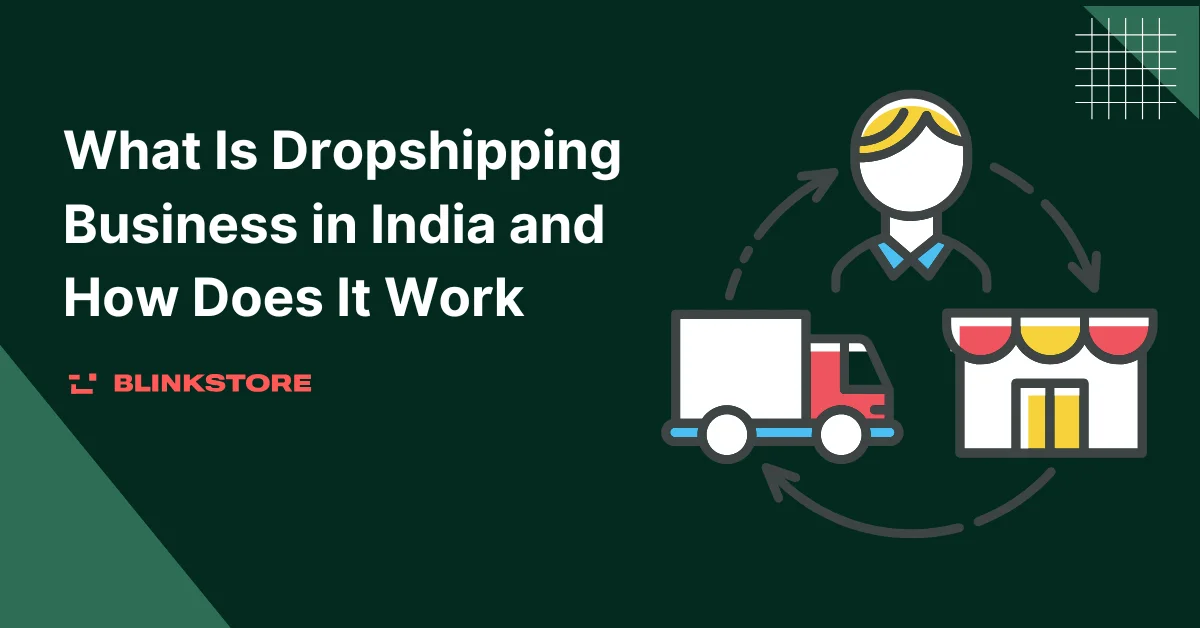Learn what is dropshipping business in India—a model where products sold online are shipped to customers by suppliers directly.
You can easily sell the most demanded products without keeping them in stock with dropshipping. Instead, when someone buys from your store, you pass the order to a supplier who ships the product directly to the customer.
The basics of selling and marketing online are all you need. To sell your products, you need an online store, and yes, you’ll also need a computer!
This post will guide you on what is dropshipping business in India and how it works. Also, it explains what to check before starting, its pros and cons, and more.
Table of Contents
What is Dropshipping Business in India?
The dropshipping business in India allows stores to sell products without keeping them in stock. Instead, when someone buys an item, the store orders it from another company, which ships it directly to the customer. This means the store doesn’t need to store, handle, or ship the products itself.
A supplier is a key part of the dropshipping business in India. When someone orders a product, you purchase it from the supplier, who then ships it straight to the customer.
In India, dropshipping works like this:
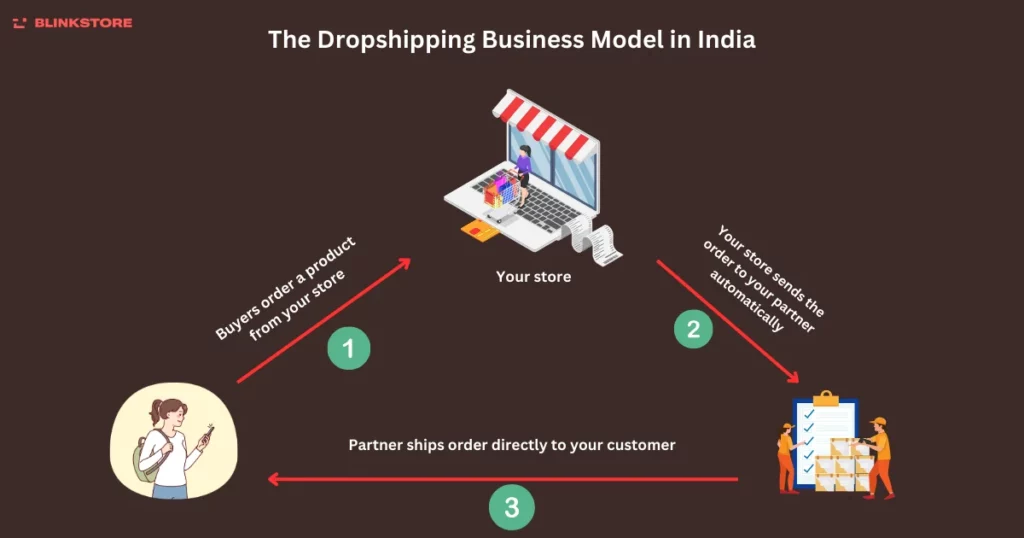
Dropshipping lets you grow your business and brand by finding the best suppliers, wholesalers, or retailers to provide the products you sell.
What Type of Business Model Is Dropshipping?
There are different models for running a dropshipping business. Depending on your goals, you can choose the one that works best for your business in India.
Reselling Products
You sell items from various suppliers in one place. The key is to highlight what makes the products special to attract buyers. If you’re good at marketing, this could be for you.
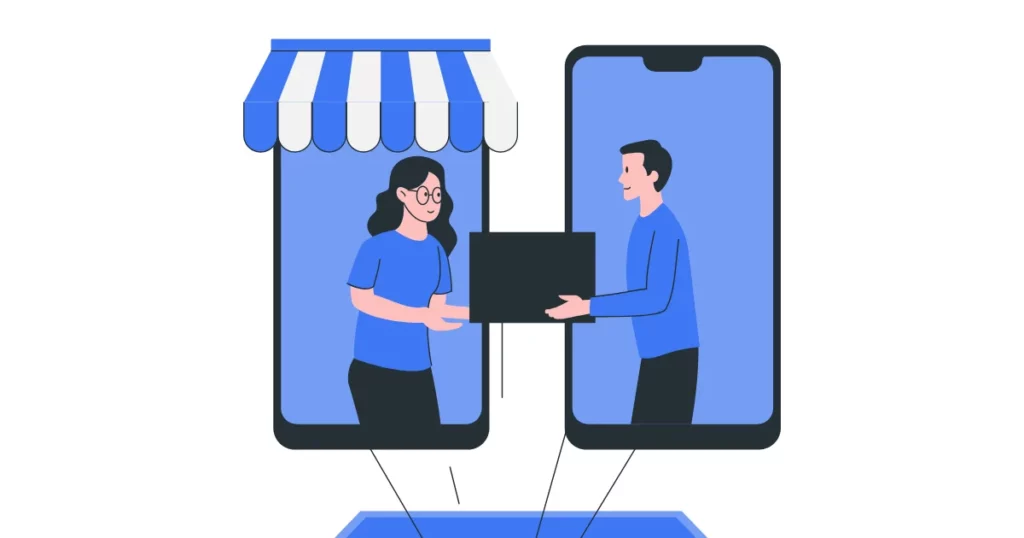
Business extensions
Business extensions allow store owners to sell online by teaming up with dropshipping organizations. These companies ship products directly to customers when orders are placed. A good partnership between the store and the dropshipper is key to success.
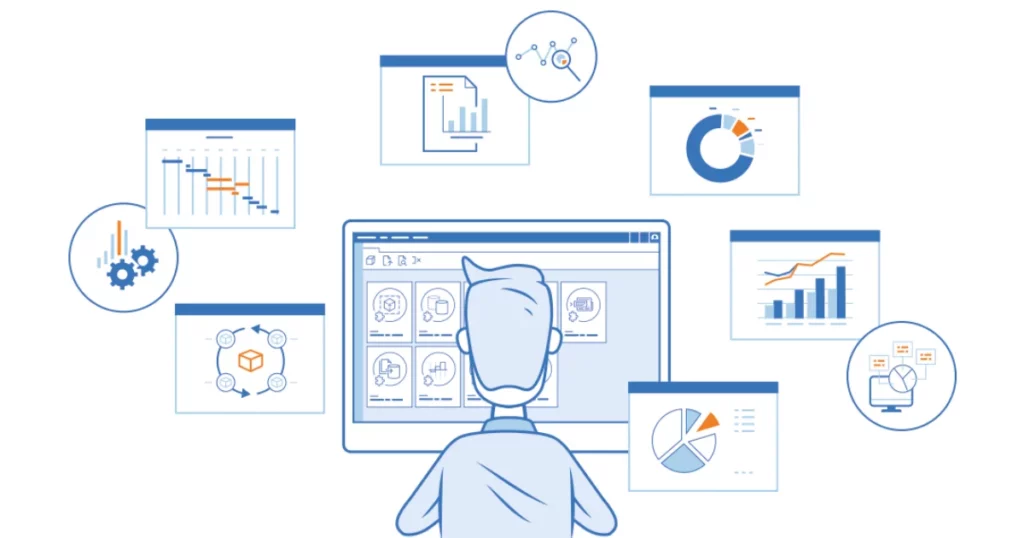
Making Your Own Products
Product creation in dropshipping means combining different items into one product. The hard part is discovering a good supplier for the products. It’s best to have one supplier for everything; otherwise, items might ship separately.
Print-on-demand
Print-on-demand is a type of dropshipping where you sell products with custom text or names. It’s easy to start in India. Popular items include t-shirts, pens, phone cases, and mugs.
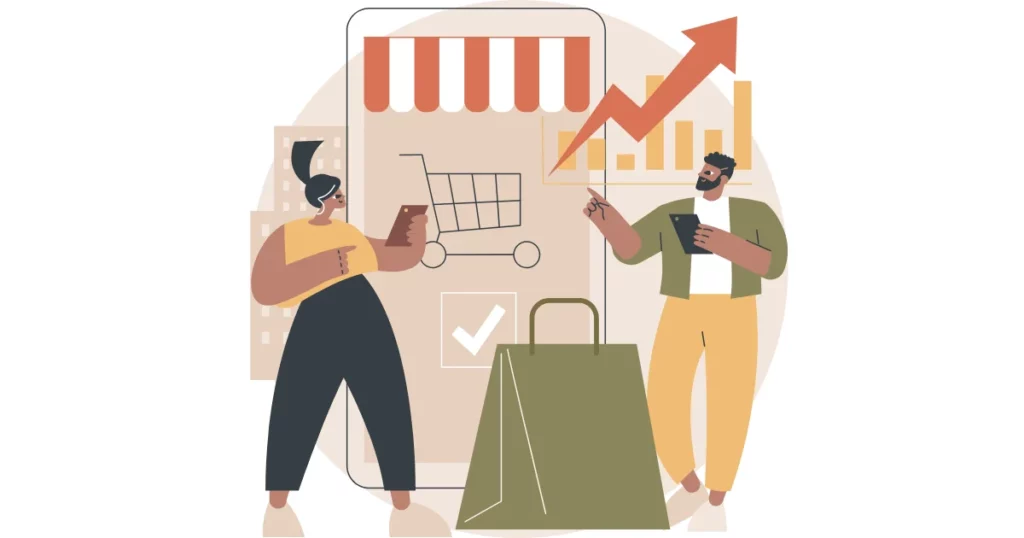
How Does Dropshipping Work in India?
Whether you’re in the USA or starting a dropshipping business in India, here’s how it works:
- Choose a Product: Pick a product from a supplier that you want to sell.
- List It Online: Add the product to your website and decide the price.
- Get Orders: When a customer buys the product from your website, they pay the price you set.
- Order from Supplier: You then order the product from your supplier at a lower wholesale price.
- Supplier Ships It: The supplier sends the product directly to your customer.
Here’s an example:
You see a printer on a supplier’s site for ₹4000. You add it to your website and set the price at ₹4600. When a customer buys it from your website, you order it from the supplier, give the supplier the customer’s shipping address, and keep the ₹600 difference as profit.
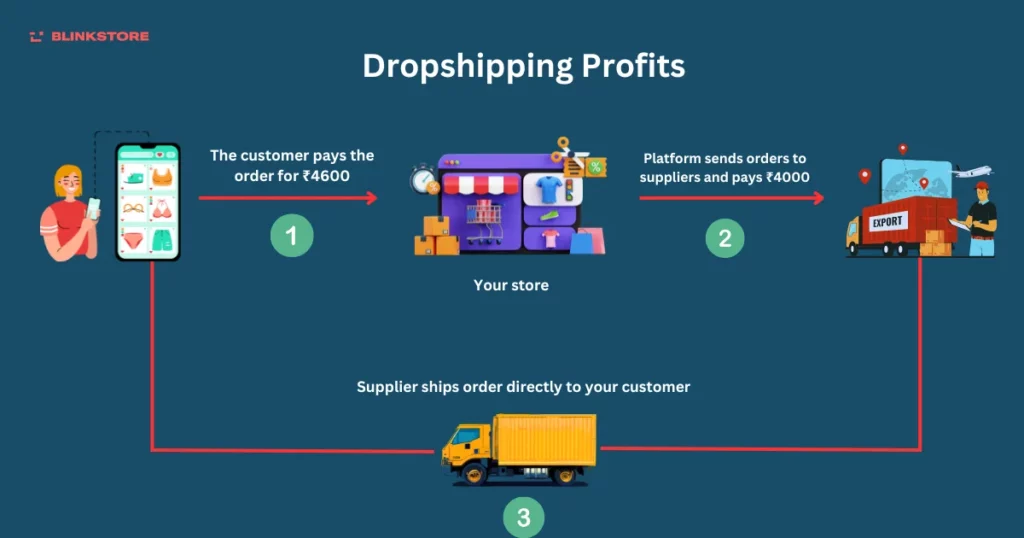
We get it—you’re probably wondering, “Why wouldn’t a customer just buy the printer straight from a supplier’s website?” Let’s find out why:
- Internet is Huge: People often don’t understand which seller to choose because there are so many options.
- It’s Not Just About the Product: When people buy products, they care about the brand, faith, lifestyle, and how the product is marketed.
The dropshipping business model isn’t free of challenges. The biggest issue is finding trustworthy suppliers who sell good-quality products. You’ll need to spend time researching and negotiating with a supplier to ensure their products and delivery meet your customers’ expectations.
Why Should You Start Dropshipping in India?
It’s estimated that by 2025 the e-commerce market will grow to $188 billion. By 2030, it’s predicted to surpass $350 billion, according to recent reports. So, dropshipping in India is a great way to start a business, no matter what products you sell.
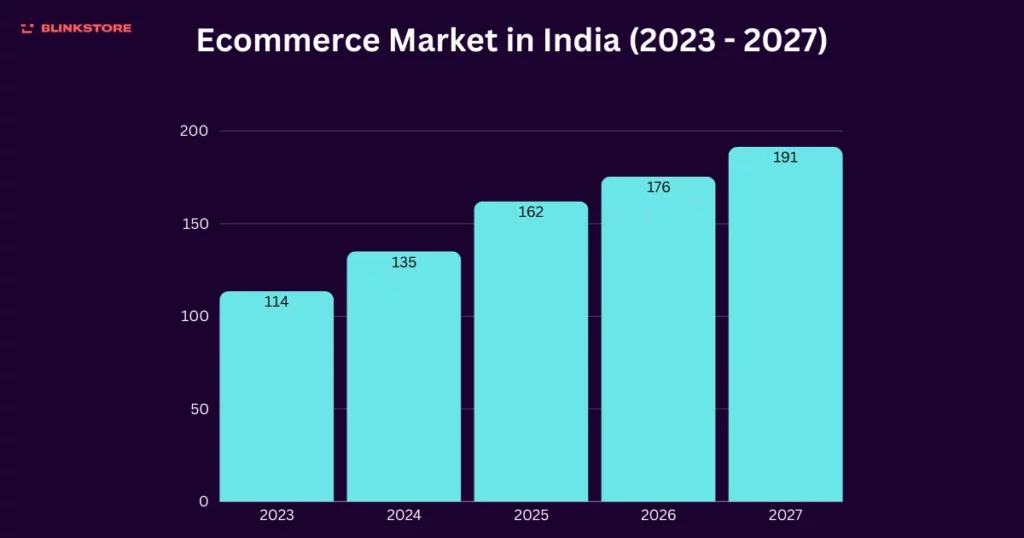
India is also one of the largest suppliers of raw materials for many industries. So, when you start dropshipping there, you can partner with local suppliers who will make sure your orders are delivered quickly.
Why Is Dropshipping Better Than Wholesale in India?
Wholesale has been popular in India for many years. However, it often requires spending more money upfront to buy goods, paying extra for shipping, and covering employee salaries to manage the work.
Goods cost more because you need to buy a lot at once to get a fair deal in the wholesale model. This means you’ll have to store more products, even though there’s no promise they’ll all be sold.
When you sell a product and want to ship it, you might face high shipping costs because you don’t have special discounts.
Starting dropshipping in India allows you to focus on promoting your brand and providing the right customer service to your buyers. The supplier or manufacturer handles everything else.
What You Must Know Before Starting Dropshipping?
Before starting your dropshipping business in India or anywhere else, you need to plan well, do good research, and have some money to begin. Consider some tips to make your dropshipping journey easier:
- Follow the legal conditions: Find out if you need a business license to start dropshipping where you live.
- Choose a Business Type: Decide how to run your business: as a sole owner, LLC, or corporation. An LLC can protect your personal money if the business gets into debt.
- Pay Your Taxes: You’ll need to pay taxes for your dropshipping business. Avoid trouble by doing so.
- Pick Good Suppliers: Reliable suppliers are super important. A good supplier makes your store better; a bad one can ruin your reputation.
- Build an Online Store: Set up an e-commerce store to sell your products. A mobile-friendly, fast-loading site is ideal.
- Focus on Marketing: Promote your store using SEO, paid ads, or social media to get more customers.
- Research the Market: Check what’s popular and learn about your target audience.
- Be Ready for Competition: Dropshipping is tough, and big businesses can be hard to beat.
How to Start a Dropshipping Business in India?
Here is a step-by-step guide to starting a dropshipping business in India with Blinkstore.
Step 1: Sign Up and Access Dashboard
Sign up and go to your dashboard on Blinkstore.
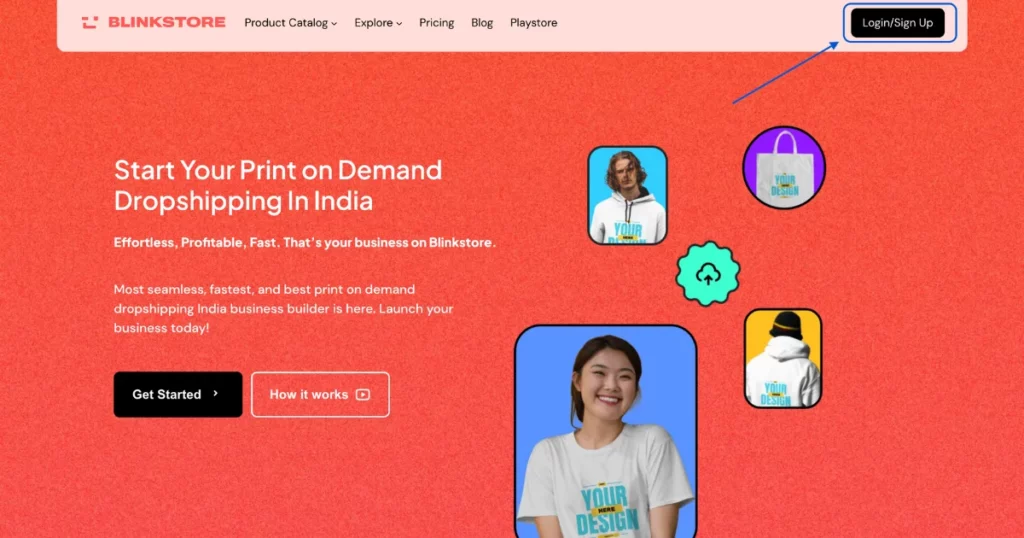
Step 2: Create a Store
Click the “CREATE+” button and choose “New Store.”
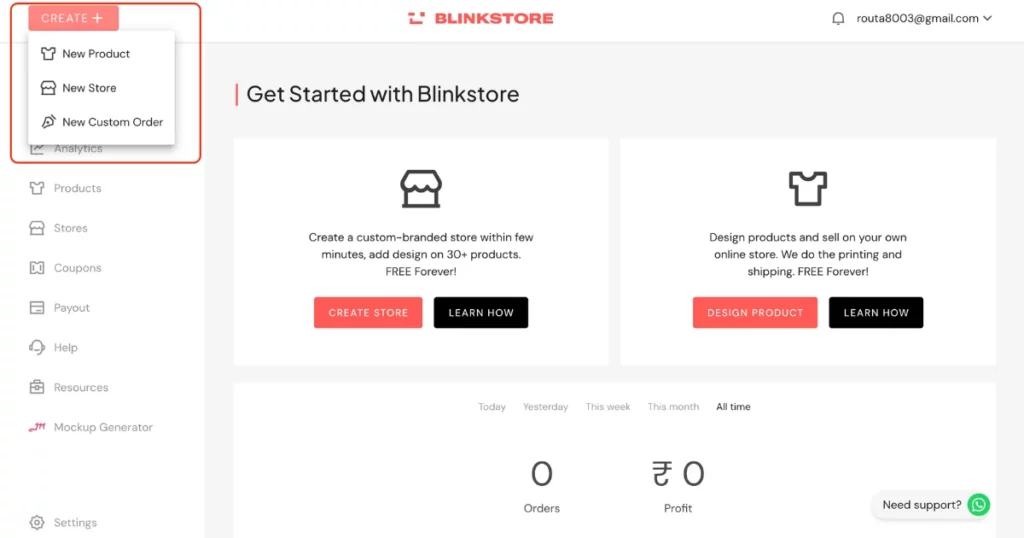
Name your store and click “CREATE STORE.”
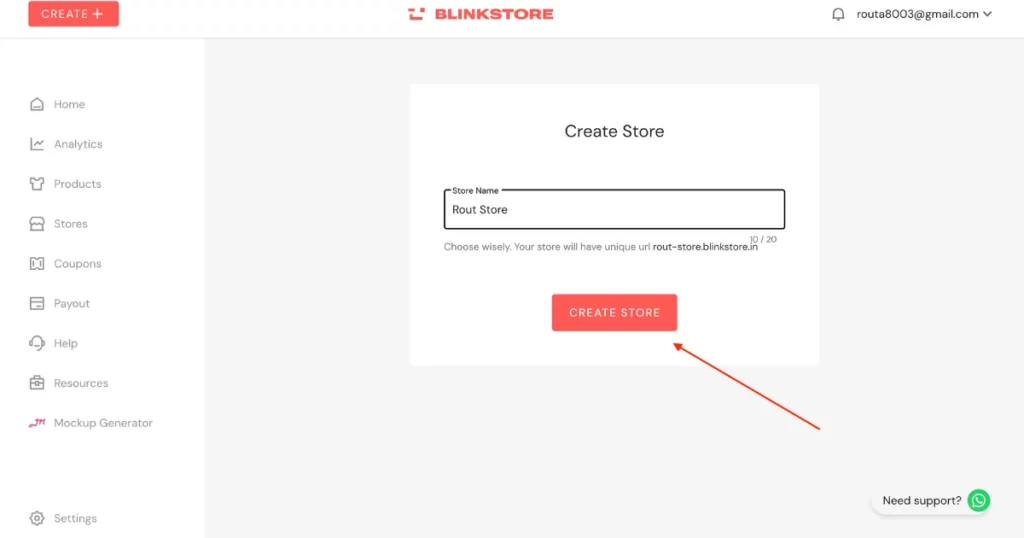
Step 3: Customize Your Store
Add a store logo, choose colors, upload a banner image, and add products.

To add products:
Click “CREATE NEW DESIGN.”
Choose items like t-shirts, hoodies, mugs, etc.

T-shirts can be customized with designs and colors.
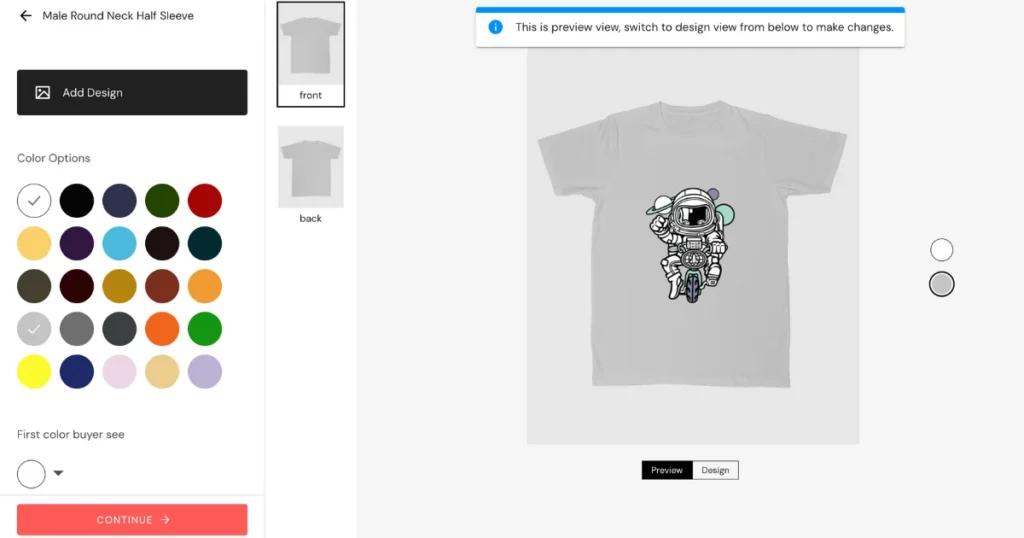
Note: Keep your design size at 300 pixels per inch. Example: For a 10×10 inch design, your file size should be 3000×3000 pixels.
Step 4: Save and Publish
After customizing, click “CONTINUE” to save your design. Add a title, description, profit margin, and tags for your product.

Click “PUBLISH PRODUCT.”
Step 5: Add More Products
Use the same design for other products by clicking “ADD PRODUCTS.” Once done, your items will appear in the “ALL PRODUCTS” section. Click “SAVE.”
Step 6: View Your Store
Click “SEE LIVE STORE” to see your store. This is where customers will shop.
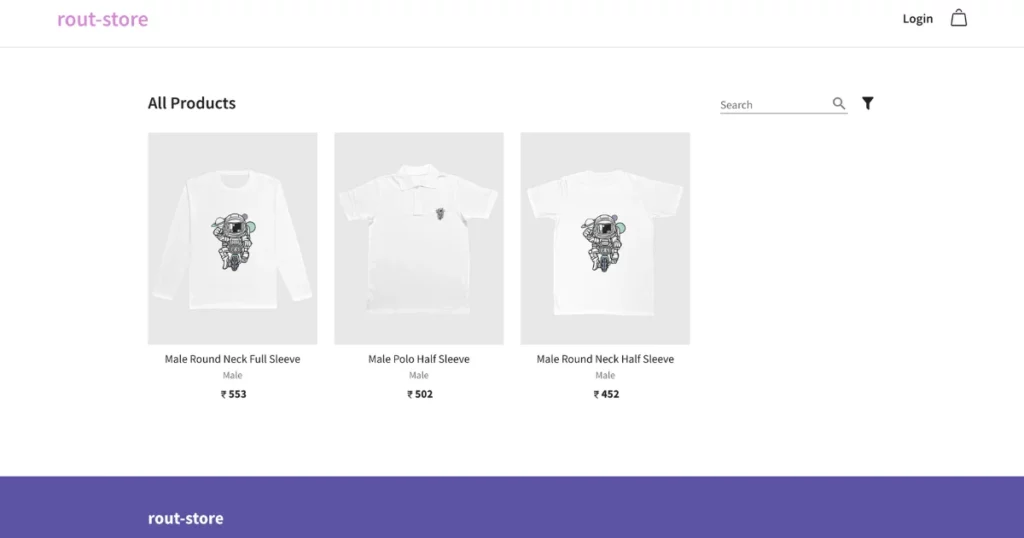
Step 7: Promote Your Store
Share your store on social media and other platforms to attract buyers.
Why Choose Blinkstore for Dropshipping?
Start your dropshipping business with Blinkstore! It’s the best print-on-demand platform in India. Here’s what makes Blinkstore great:
- No fees to start
- No inventory hassle
- Custom branding for free
- Free mockup tool
- Easy-to-use dashboard
- Lots of product options
- Shopify & WooCommerce support.
- High-quality printing
What Is the Start-up Cost for Dropshipping in India?
Dropshipping is affordable to start because you don’t need to buy products upfront or pay for storage. But you need to be smart and patient about it. If your first products don’t sell, it might be because of poor marketing, picking the wrong products, or having a dull website.
Starting your dropshipping business in India can cost anywhere from ₹7,000 to ₹45,000 or more. The cost depends on how big your business is, the marketing methods you choose, and the products you sell.
How Long Until Dropshipping Is Profitable?
In India, the average dropshipping income in India for beginners usually earns between 40,000 and 1.5 lakh rupees a month. It can take anywhere from six months to a year to start making money like this.
Yes, dropshipping is profitable in India, but to earn faster in dropshipping, here are some tips:
- Make a clear plan.
- Choose the right products.
- Focus on marketing.
- Research and pick a good niche.
How to Pick a Good Supplier in Dropshipping?
To make the right decision when choosing a dropshipping supplier, you should consider these tips.
- Trust and Reliability – Choose a supplier people trust and who delivers on time.
- Variety of Products – Look for a supplier with a wide range of products.
- Good Product Quality – Make sure their products are well-made and worth buying.
- Fair Pricing – Check if their prices are reasonable and competitive.
- Fast Delivery – Ensure they can ship products quickly.
- Helpful Customer Support – Pick a supplier that answers questions and solves problems quickly.
- Location – Consider where the supplier is based for faster shipping to your customers.
- Easy Returns – Make sure they have a simple return process for faulty or unwanted items.
How to Find Top Selling Dropshipping Products?
To discover the best products for your dropshipping business, do some market research. There are many free websites and tools online to help you find top products.
1. Check Social Media
Instagram and Pinterest show you trending dropshipping products. If you don’t have accounts yet, now’s a good time to join.
Consider making separate social media accounts just for finding dropshipping products. Follow famous influencers in your niche to notice what products they advertise and how people react.
Instagram Insights, Pinterest Analytics, and Meta Foresight help track how well your posts are doing. Meta Foresight is part of Facebook’s Business Suite.
2. Study Competitors
Checking out competitors is important in marketing. It helps you see what products they sell and what they don’t. Look for gaps you can fill with unique or trending products to increase profits.
3. Use Google Trends
Google Trends is a tool that shows which dropshipping products are popular. Just type in keywords for your product ideas, and it will show how much people are searching for them, how interest has changed, and what’s trending in the niche

Which Products Are Best for Dropshipping in India?
The popularity of products changes with seasons and other reasons. Look at the popular products to sell online in 2025 based on our research.
| Category | Products |
| Fashion | Nail extensions, Scrunchies, Shapewear, Slip-on shoes, Tote bags |
| Beauty | Beard care products, Hygiene kits |
| Home decor | Home Decor |
| Workout | Bicycle, Resistance band, Tent, Yoga mat |
Fulfillment and Supply Chain for Dropshipping
The supply chain is the path a product takes from being created to when it gets to customers. In dropshipping, the supply chain can include many steps, like getting raw materials, making the product, and delivering it to customers. But what’s most important is knowing the key people involved—manufacturers, wholesalers, and retailers.
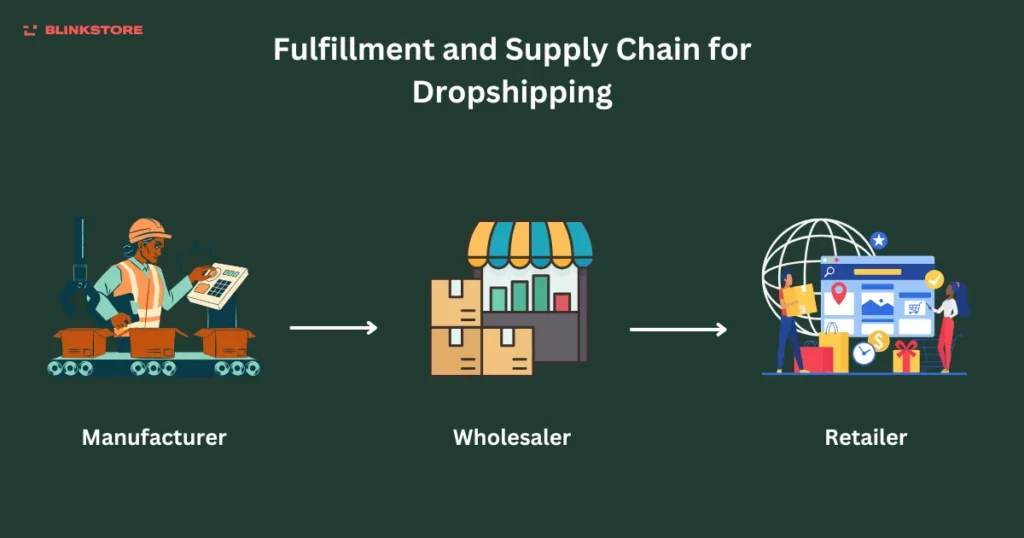
Here’s a table showing the differences between manufacturers, wholesalers, and retailers:
| Manufacturer | Wholesaler | Retailer |
| Manufacturers create products, from idea to final version. They sell to wholesalers or retailers, not directly to customers. Buying from manufacturers is cheaper, but you need to buy in bulk. | Wholesalers buy products in bulk from manufacturers, may make small changes, and sell them to retailers. Also, they require bulk orders, but usually in smaller amounts than manufacturers. | Retailers buy from wholesalers and sell directly to customers. They are the ones who sell to people but don’t always handle the products themselves. |
What Is the Difference Between Dropshipping and Retail?
Dropshipping can be part of any step in the process. It’s when a business doesn’t keep products in stock but instead has a dropshipping company store and ships them directly when an order is made. For example, if a manufacturer offers dropshipping, they make, pack, and ship products under the retailer’s brand without the retailer needing to store anything.
What are the Pros and Cons of Dropshipping?
Before starting your dropshipping business in India, it’s necessary to understand the pros and cons.
| Pros | Cons |
| Easy and cheap to start | Lower profit margins |
| No need for a business entity | Inventory issues with suppliers |
| No need to manage inventory or shipping | Shipping problems (delays, wrong products) |
| Access to many products from suppliers | Poor quality, slow delivery from suppliers |
| Can set your own profit margins | High competition |
| Easy to scale without increasing workforce | Less control over customer experience |
What Are the Best Tips for Running a Dropshipping?
Starting a dropshipping business in India might look easy, but a lot can go wrong. Here are some tips to help your dropshipping business run smoothly:
1. Handle Mistakes Quickly
Problems can happen in any business. You might have trouble with suppliers, deliveries, products, or inventory. If these issues affect your customers, it’s important to take responsibility instead of blaming others. To make up for it, on their next purchase, you can offer a discount, refund the shipping cost, or replace or upgrade the product.
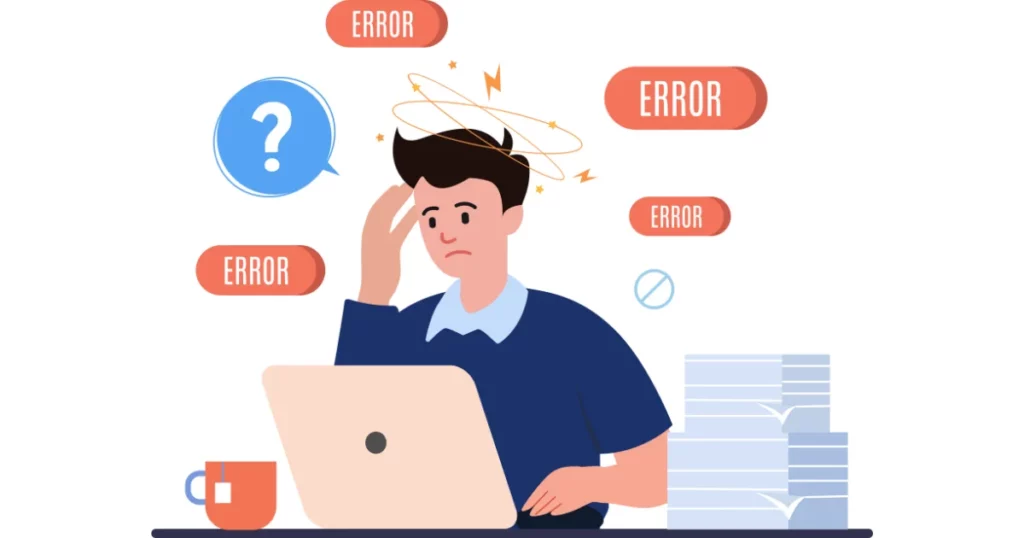
2. Work with More Than One Supplier
No matter how good or reliable one supplier is, it’s smart to work with more than one. This reduces the risk of relying too much on a single supplier. Using multiple suppliers can help you get products more often, avoid running out of items, and keep more stock available. Just make sure to manage your inventory well and choose the right products when working with different suppliers.

3. Focus on Customer Support
You might believe you can handle all the customer emails, questions, and requests by yourself. But when they start coming in non-stop, it will feel overwhelming. Depending on your budget, hire people to help manage customer calls, emails, and chats. Great customer service directly helps your business grow and keeps customers coming back.
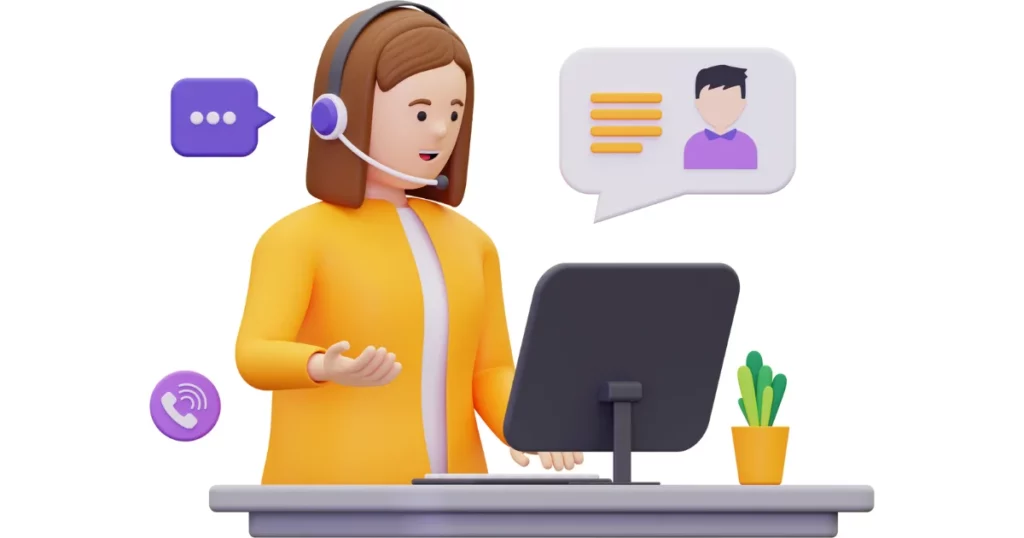
4. Create a Clear Return Policy
You need a clear return policy for dropshipping. Be upfront about it so customers know what to expect. Explain the rules, any special cases, how to return items, if there are extra fees, and how long they have to return something. Make the process simple so it doesn’t scare customers away from buying.
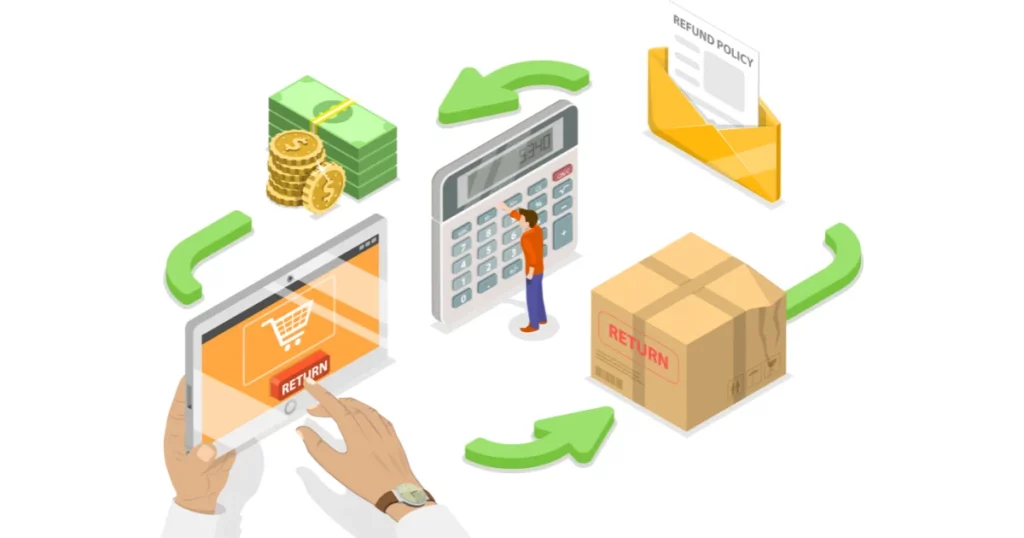
5. Don’t Ignore Marketing
Once your website is ready, focus more on marketing. It’s hard to attract customers without a good plan. Use methods like SEO, ads, and social media to bring more visitors to your site. Platforms like Instagram and Facebook can help. You can also try affiliate marketing and influencers to promote the business without spending too much.

6. Offer Good Quality Products
To succeed in dropshipping in India, focus on quality in every area: your website, products, suppliers, and customer service.
- Build a Great Website
- Pick Reliable Suppliers
- Prioritize Customers

7. Watch Your Competitors
To improve faster, keep an eye on your competitors. Learn from the mistakes, clever ideas, and how they do things. Check their website, products, and social media regularly to find ways to do better and stand out.
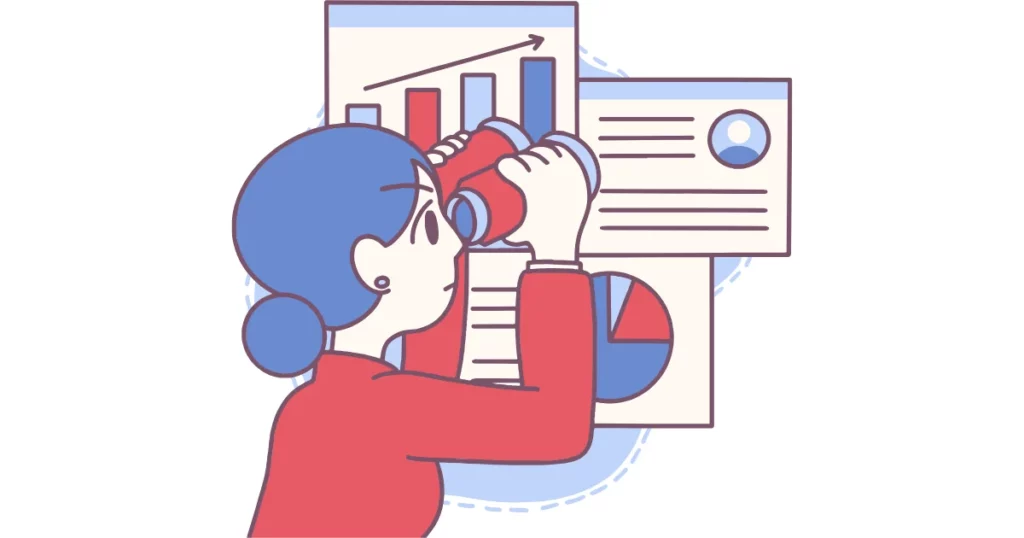
Conclusion
We hope this blog has assisted you in understanding what is dropshipping business in India, how it works, how to start and more.
Now that you have a plan for your dropshipping business in India, it’s time to start!
Launch your business with Blinkstore today. Pick from a variety of white-label products, from clothes to accessories, at the best prices. You can also connect with e-commerce platforms for easy, automatic order handling.
FAQs on What is Dropshipping Business in India
What is dropshipping business in India without investment?
Dropshipping in India is a way of running an online store without keeping products in stock. When someone buys something, the product is sent directly from the supplier to the customer. This method lets you start a business with very minimal money, mainly focusing on advertising and picking the right products to sell.
Is dropshipping legal in India?
Yes, dropshipping is legal in India. There are no rules that say you can’t do it, but you still need to follow other laws, like registering for GST and making sure you protect customers.
How to find a dropshipper?
Finding the right dropshipper is key to your business. Use Google to search, ask other stores for supplier info, and talk to suppliers about product quality, delivery, and packaging.
How to deal with refunds when dropshipping?
Most buyers check return policies before buying. If the return cost is too high, send a new product and let them keep the old one. Always respect your customers’ wishes.
Is it possible to dropship copyrighted products?
Dropshipping copyrighted or trademarked products is illegal and can lead to legal trouble. It’s best to avoid them.
Can you operate your dropshipping remotely?
In India, you can run your dropshipping business remotely. You’ll need a website, an e-commerce platform, a supplier, and a good marketing plan. You can use tools like Google Meet or Zoom to work with others easily.
Do I need a license to run an Indian dropshipping business?
It’s best to register the business before beginning dropshipping in India. You can do it through the MSME or Ministry of Corporate Affairs and also need GST registration.
Related reading:
